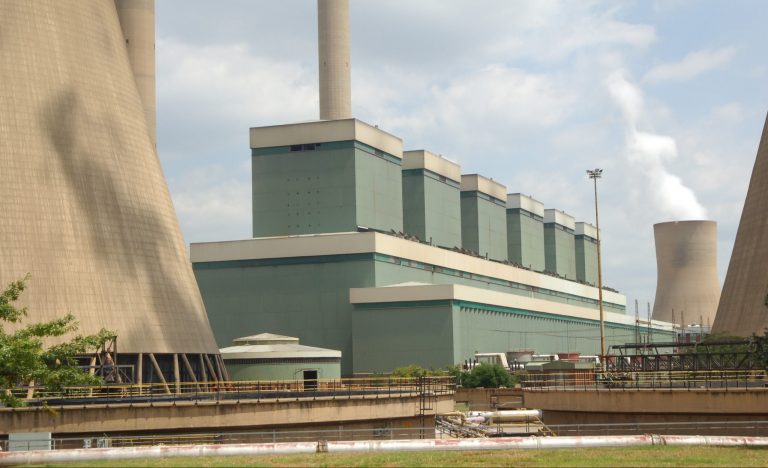Power system remains stable, EAF increases further, diesel expenditure decreases, and unplanned outages reduced by 2 143MW year-on-year
Friday, 14 November 2025: Eskom’s generation fleet continues to demonstrate resilience and improvement, marking a significant turnaround driven by the success of the Generation Recovery Plan.
The Energy Availability Factor (EAF)—which measures the percentage of time the generation fleet is available to produce electricity—has reached 70.75% month-to-date, a notable increase of 7.59% from 63.16% in the same period last year. Year-to-date, EAF stands at 63.48%, with the fleet achieving or exceeding the 70% mark on 37 occasions. These figures underscore both recovery and sustained improvement in EAF performance, reinforcing energy security and grid stability.
The improved EAF has sharply reduced Eskom’s reliance on expensive diesel generation, enabling a greater focus on cost-effective primary energy sources.
Diesel expenditure for the past week was a marginal R4.80 million, compared to R287.64 million during the same period last year, underscoring the financial and operational benefits of the Eskom turnaround.
The limited diesel usage was exclusively for environmental correlation tests on Unit 12 at Ankerlig Power Station to meet statutory compliance requirements.
Year-to-date, diesel expenditure remains consistently below budget.
For the period 7 to 13 November 2025, the average Unplanned Capability Loss Factor (UCLF)—which measures the percentage of generation capacity lost due to unplanned outages—remains below the 20% mark, at 18.83%, an improvement of 4.65% from 23.49% during the same period last year.
The average Planned Capacity Loss Factor (PCLF) for 7 to 13 November 2025 stands at 10.92%, lower than the 13.6% recorded last year. This planned maintenance aligns with Eskom’s long-term maintenance schedule and ongoing efforts to enhance plant reliability and operational consistency.
Between 7 and 13 November 2025, Eskom recorded an average of 9 115MW in unplanned outages—an improvement from 11 257MW during the same period last year. This year-on-year reduction of 2 143MW in breakdowns highlights the growing reliability and resilience of the generation fleet.
South Africa has now experienced 182 consecutive days without interrupted supply, with only 26 hours of loadshedding recorded in April and May during this financial year.
To maintain reliability, Eskom will bring back 4 270MW of generation capacity ahead of the evening peak on Monday, 17 November 2025, ensuring a stable electricity supply throughout the week. Today’s evening peak demand is forecast at 23 568MW, supported by 28 153MW of available capacity. In addition, 15 generation units—equivalent to 5 645MW—are on cold reserve due to excess capacity.
Eskom published the Summer Outlook on 5 September 2025, covering the period 1 September 2025 to 31 March 2026, which projects no loadshedding due to sustained improvements in plant performance from the Generation Recovery Plan.
Key Performance Highlights
- Year-to-date, the UCLF further reduced to 24.73%, reflecting a week-on-week improvement of approximately 0.19% and remaining below last year’s 25.18%.
- Planned maintenance averaged 5 319MW, accounting for 11.33% of total generation capacity, similar to the previous week but 0.03% higher than the same period last year.
- The year-to-date EAF is steadily increasing, currently sitting at 63.48%, an increase from last year’s 63.02% in the same period as a result of reduced unplanned outages and additional capacity.
- Between 1 April and 13 November 2025, Eskom generated 1 024.47GWh from its OCGT plants, incurring diesel costs of R6.079 billion, slightly higher than the 998.79GWh produced during the same period last year. Importantly, diesel consumption has been declining steadily month-on-month since May 2025, with the current load factor at just 0.08%. Diesel usage during the current week was limited to statutory environmental compliance tests.
- The year-to-date OCGT load factor decreased to 5.51%, a 0.17% improvement from the previous week but remains slightly above the 5.37% recorded during the same period last year.
Progress toward ending load reduction
While system stability continues to improve, illegal connections and meter tampering remain a concern, damaging infrastructure and posing serious safety risks. Load reduction remains a temporary measure in high-risk areas to protect communities and infrastructure.
Eskom began implementing its phased programme to eliminate load reduction before its official launch on 13 November 2025 in Sandfontein village, North West. The initiative, which will continue until 2027, is expected to benefit approximately 1.69 million of Eskom’s 7.2 million customers across 971 feeders, with high numbers in Gauteng, Limpopo, Mpumalanga, and KwaZulu-Natal.
Key interventions include:
- Expanding Free Basic Electricity to more households
- Installing 577 000 smart meters by 2026, with full completion by 2027, to enhance demand management and grid stability. To date, 37 482 smart meters have been installed across all provinces on feeders subject to load reduction. Two feeders in Limpopo province have been fully completed and, after a seven‑day monitoring period, will be removed from the load reduction schedule.
- Deploying Distributed Energy Resources (DERs) to strengthen supply in high-demand and remote areas
Eskom calls on communities to support these initiatives by reporting illegal connections, using electricity responsibly, and protecting infrastructure. Through technology, infrastructure upgrades, and public cooperation, Eskom is building a safer, smarter, and more reliable power system for all South Africans.
Any illegal activity affecting Eskom’s infrastructure can be reported to the Eskom Crime Line at 0800 112 722 or via WhatsApp at 081 333 3323.
Eskom will provide its next update on Friday, 21 November 2025, or communicate any significant developments as they occur.
ENDS







